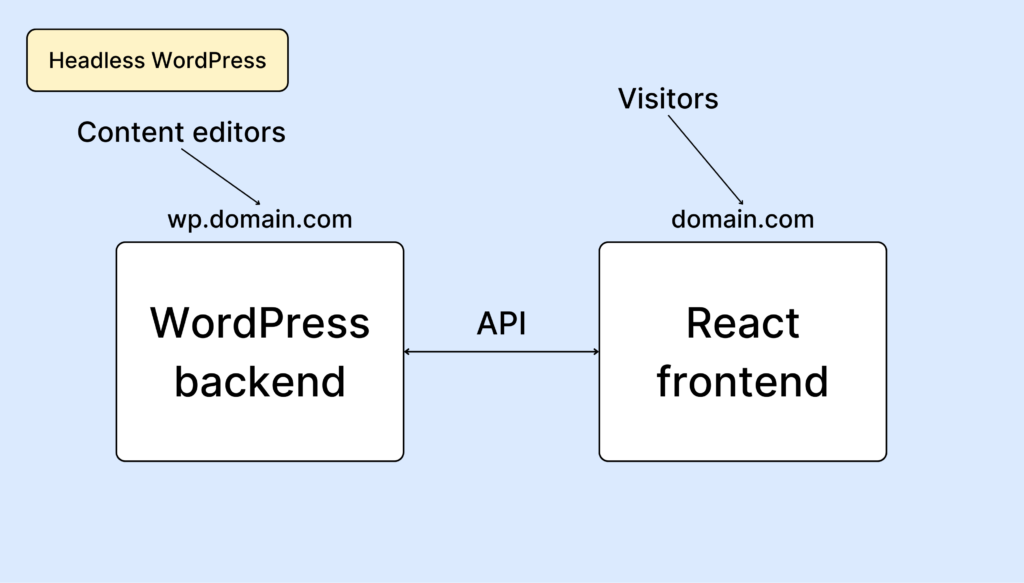What is headless?
Before we dive deeper, let’s clarify what a headless is. Traditionally, a website consists of two main parts: the front-end (what users see) and the back-end (the server and the database). In a headless architecture, these two parts are separated. This means that the front-end – the user interface – is completely independent of the back-end. Such websites retrieve data via APIs, which gives enormous flexibility.

Why headless is the future
Flexibility and Scalability
As a developer, I appreciate the flexibility headless offers. I can choose the technologies that best suit the project, whether it’s React, Svelte, Astro or something else entirely. This gives me the freedom to create user experiences that are both dynamic and engaging.
Improved Performance
Another advantage of headless websites is performance. By separating the front-end and back-end, the website can load faster, which is essential in an age where the user experience is the key to success.
Easier Maintenance
Maintenance is also easier with headless. Updates on the front-end or back-end can be done independently of each other, which reduces the complexity and time it takes to implement changes.
Is headless complicated?
A common misconception is that headless architecture is complicated. While it requires some technical understanding, the reality is that modern development tools and frameworks have made the process far more accessible. With API-driven solutions and a growing community of developers sharing knowledge and resources, the threshold for getting started with headless is lower than ever.
Final thoughts
In my opinion, headless websites are not just a trend, but a logical development in web technology. It offers a combination of flexibility, performance and simplicity suitable for a wide range of applications. Whether you are a small business or a large company, it is worth considering headless as part of your digital strategy. For developers like myself, it’s an exciting time to explore the possibilities this architecture provides.
